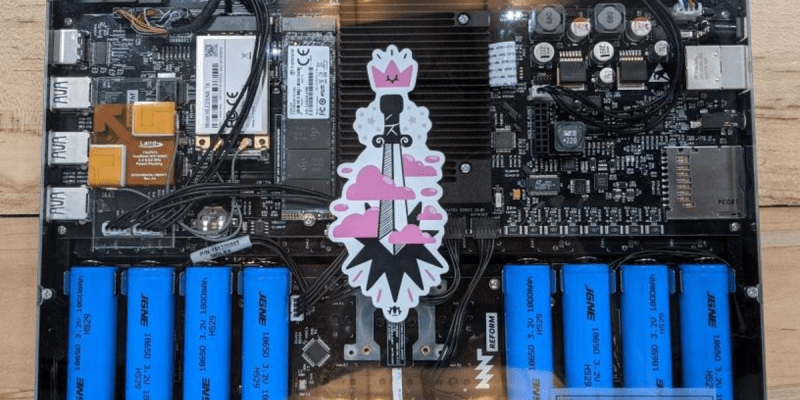
When we met our contact from MNT in the coffee shop, he was quietly working away on his laptop. Jet black and standing thick it was like an encyclopedia that didn’t quite blend in with the sea of silver MacBook lookalikes on the surrounding tables. After going through all the speeds and feeds we eagerly got our 64 piece driver kit out to open it up and see what made this marvel tick, but when the laptop was turned over it became clear that no tools were needed. The entire bottom of the machine was a single rectangle of transparent acrylic revealing everything from sharp white status LEDs on the bare mainboard to individual 18650 LiFePO4 battery cells in a tidy row. In a sense that’s the summary of the entire product: it’s a real laptop you can use to get work done, and every element of it from design to fabrication is completely transparent.

The device pictured here is called the Reform and is designed and manufactured by MNT, a company in Berlin, Germany (note MNT stands for MNT, it’s not an acronym). The Reform is a fully open source laptop which is shipping today and available via distribution through Crowd Supply. If the aesthetic doesn’t make it clear the Reform is an opinionated product designed from the ground up to optimize for free-as-in-freedom: from it’s solid metal chassis to the blob-free GNU/Linux distribution running inside.
We’re here to tell you that we’ve held one, it’s real, and it’s very well built.
The Hard Numbers
Let’s get the spec punch list out of the way first. The currently shipping MNT Reform is powered by a Boundary Devices Nitrogen 8M System On Module which contains a quad core 1.5 GHz ARM64 processor (the NXP i.MX8M Quad) with 4 GB of RAM. This is packaged into a module that slots into a SODIMM slot on the mainboard next to a standard M key m.2 2280 socket with PCIe for an NVMe drive of the user’s choice, and a mini PCIe card slot for a WiFi or cell radio. All together this should make for a serviceable hardware package for daily use, especially with that fast PCIe storage, though the processor will be a little anemic by the standards of a modern personal computer, or even a high end smartphone.
Exposed along the edges of the laptop chassis are three USB 3 ports in the USB-A form factor, full sized SD card, a 1/8″ TRRS jack, gigabit Ethernet, and power via a barrel jack. If we were designing a machine from scratch today, we’d love to see that barrel jack replaced with USB-C and Power Delivery, but that’s a minor complaint, and as the saying goes the sources are available, so we could always fix that ourselves!
Moving to the outside we can report that the MNT Reform feels exactly the way it looks in all the pictures; like an absolute brick of a machine. This particular unit has been lovingly bestickered but the bead-blasted, CNC milled chassis is absolutely every bit as well-built as we had hoped. In traditional notebook reviews, thin and light laptops get lambasted for wibbly-wobbly bendy screens and failing the “one handed open test”, which checks if the display can be opened without a second hand to keep the base of the computer planted on the table. The Reform certainly has no problems in either of these departments. The screen escapes its retaining magnets with a satisfying pop and swings smoothly open to past 180º on stiff hinges with nary a complaint or flex in sight.
Human Interface
Lacking a camera or internal microphone, the primary interface an operator will have with the MNT Reform is via keyboard and pointing device. As the astute reader has no doubt noticed, this portable computer is rather thick compared to the slivers of aluminium that you’d find at your favorite electronics retailer. But thickness has some tangible benefits in the interface department.
First we’ll point out the pointing device, which is a modular USB peripheral the user can specify when purchasing the machine. Besides the 1337-hacker choice to have no pointing device at all, the Reform is available in two configurations; trackpad and luxurious trackball.

We haven’t seen the trackpad in person so can only speculate about how it operates. It’s an off the shelf capacitive affair packaged under glass to give your digits the smoothest glide possible. It supports a standard range of multi finger gestures and we’re sure it’s perfectly fine. But this is Hackaday, so we were absolutely thrilled to get our digits on the glorious trackball.
The trackball is an option that emphasizes the aesthetic the Reform is really built to indulge. The ball and five mechanical keys are packed into the same rectangular surface area as the trackpad to allow either to be installed, but there is plenty of room to maneuver. The ball is big at 2.5 centimetres in diameter, and just the right balance between tacky for good finger grip and smooth for easy rolling. Significantly, the ball is large enough that it’s easy to execute precise movements without much trouble, an issue we’ve experienced before on tiny trackballs.
Above the pointing device is the keyboard, and what a keyboard it is. As enthusiasts ourselves, we were excited to see that the unusually deep chassis here was leveraged once again to include real mechanical switches for a premium typing feel. These aren’t full sized keyswitches, but Kailh Choc low profile switches. Even so they provide a deep 3 mm of travel, closer to the 4 mm of a traditional full size Cherry MX switch than the 1 mm you’d get on a 2021 keyboard from Apple.
The keyboard layout is not completely standard, but with a little typing we don’t think it would be a problem. The other notable detail is the keycaps themselves. Kailh Choc switches use special keycaps that are typically of the utterly flat chicklet variety in vogue on modern laptops. Bucking this trend once again, the Reform has very deep keys which we found helped our digits distinguish them when typing quickly. Needless to say in our short time with the machine it was a very comfortable keyboard to clack away at. The only note against it was the flexure in the center of the deck, which got a little bouncy when we were aggressive with the keys. But this was only noticeable after it was specifically pointed out as an area for improvement.
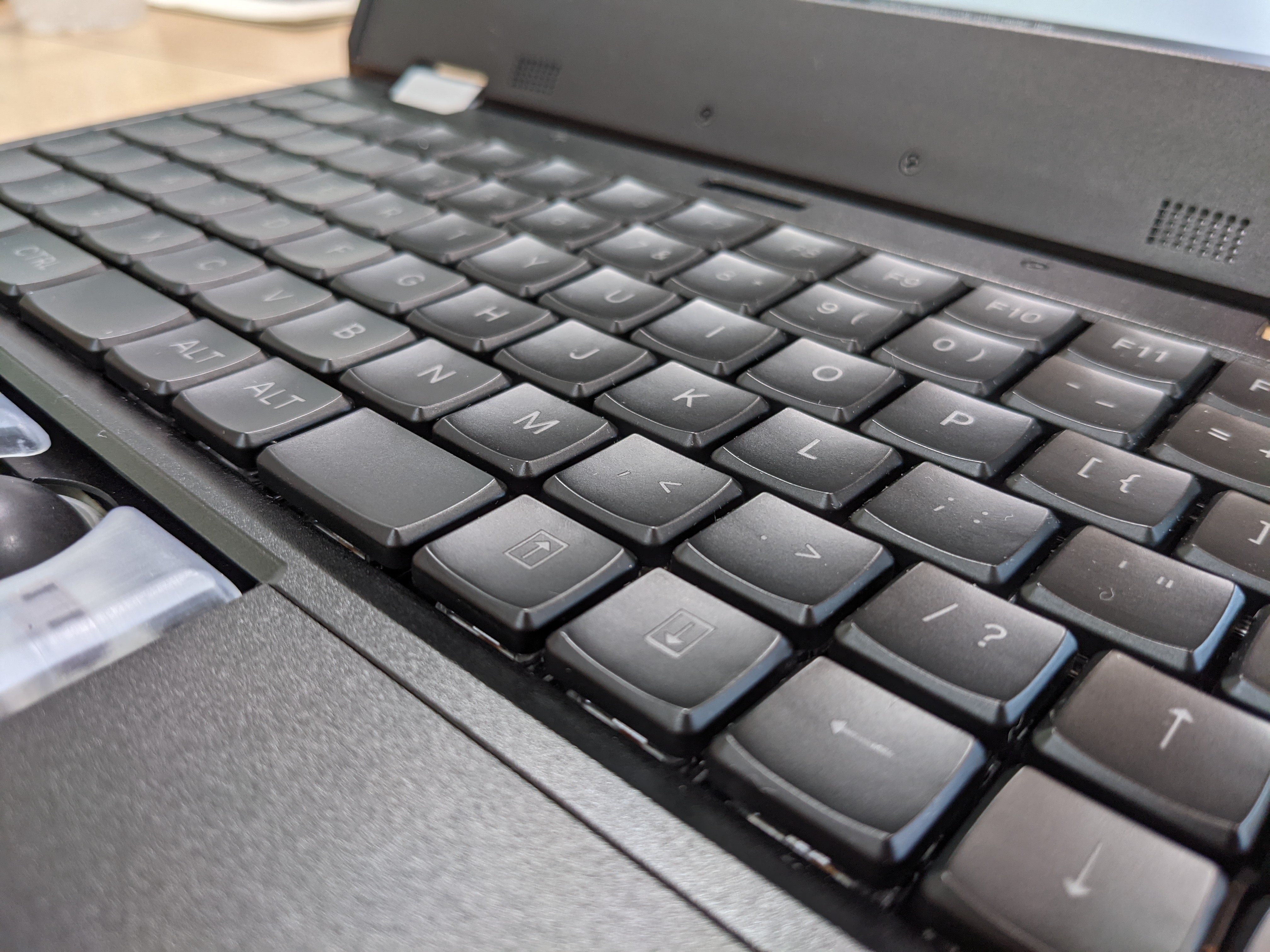
Also notable is the small display above the keyboard. This is a sort of system management display, or rather an interface to the main processor’s supervisory micro. It connects with the keyboard and allows the user to view certain system information like battery status even while the machine is completely off. Of course it’s fully programmable just like the rest of the system.
To wrap up the device, we will mostly elide what it was like in the few minutes we spent using it as a computer. It’s fine. It’s a Linux computer. If you’ve used one before you know what to expect here, which is in its own way a complement in its banality. By default each machine comes with the relatively conservative Debian distribution and a mainline kernel, so for daily use you won’t need to be a terminal wizard and switching to another OS should be straightforward.
The Reform is a niche product for a niche audience. It’s unapologetically hefty. An interested buyer will pay north of $999 to buy one, and at that lower price will have to assemble it themselves: pre-assembled units start at $1,550. It has a processor that is sufficient for daily use but lags behind the latest 4.5 GHz burst octa-core behemoth from Intel or AMD. But none of that is the point.
Comparable ‘Rigs
It’s hard to come up with a substantial list of competitors to the MNT Reform. If you were lucky enough to be in the market for a portable computer at the right time there was the Novena; a similarly open source, similarly expensive, similarly rectangular computing device from [Bunny] and [Xobs]. More recently there are the devices from Pine64, the Pinebook and Pinebook Pro. These are also easy to service, though there isn’t nearly enough room inside for much in the way of additions. They have even more anemic processors than the Reform, and most importantly have open software but – as far as we know – totally closed hardware. Lastly there is the tide of cyberdecks (which we love!), generally in the form of a Raspberry Pi coupled to a battery, screen and keyboard. Few if any of these are commercial products, and even if they were, the constituent parts are similarly non-free.
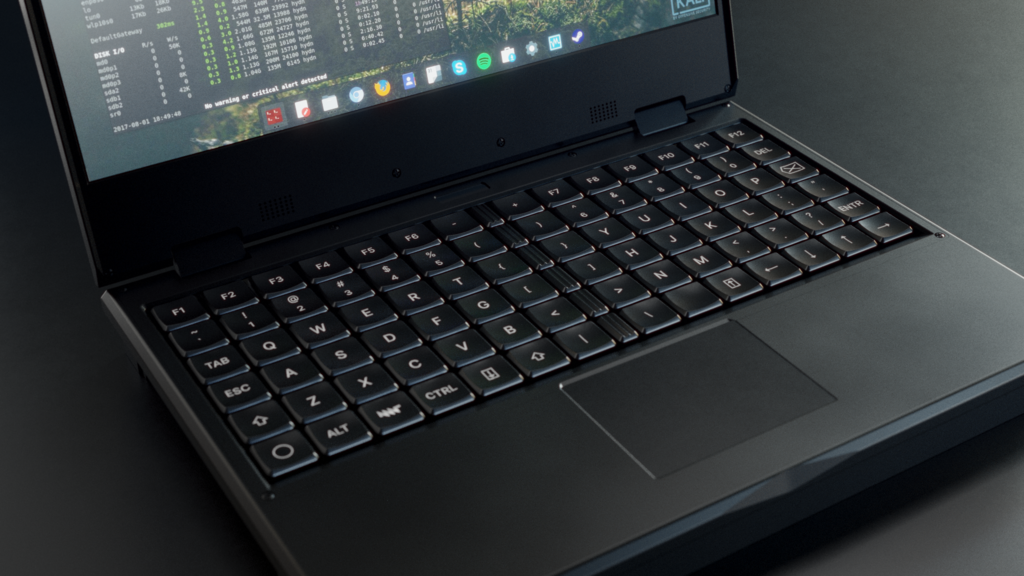
And that’s it. Besides the Novena we’re hard pressed to find any totally comparable devices, especially not ones with commercial availability and a production volume higher than one. We’re sure you’ll let us know if we missed something. So that leaves us with an unusual beast in the MNT Reform. It’s open to a fault, from the bits in the flash to the atoms in the aluminum. It’s built by hand by a four person team in Berlin (plus requisite shop dog). Its thickness is best measured in integer inches, and it’s fairly expensive. So why does it exist?
In some ways these unusual traits hearken back to one of the influences of the MNT Reform: retrocomputing. Not in the literal sense that this is a Commodore 64, but in the spirit of the thing. The machine is large and invites you to poke around inside, with clear labels and an easy entry method. It comes with a thick manual that starts with friendly instructions about how to get around the Linux command line and ends with the complete schematics for the entire machine. It’s a useful tool but also one you can learn and grow with. And from that openness inspires people to learn from its example and mod it to suit their needs.
Building a completely open computer whose every design element caters to a group of enthusiastic hackers means that it didn’t take long for improvements to begin appearing. The highest profile of these might be the new keyboard design from crowd favorites OLKB, known for making a variety of diminutive keyboards with ortholinear layouts like the Planck. Of course this new keyboard is only real when it’s shipping, but as OLKB is a long established entity with a history of shipping keyboards in relatively high volume it seems like a safe bet.
Besides a new keyboard we’ve heard of multiple replacement System On Modules which should change the available compute capabilities in exciting ways and keep the Reform usable for years to come. MNT itself is working with a partner to bring a module powered by the the NXP Layerscape LS1028A and a whopping 8 or 16 GB of RAM to market. And [Lukas Hartmann] the founder of MNT has posted some very tantalizing renders of a SOM card containing a burly Kintex-7 FPGA which may one day play host to anything from RISC-V cores to a supercomputer of Z80s.
Where Do We Go From Here?

This is a real laptop, that you can buy today. It’s built out of high quality materials and will probably survive the rigors of daily metro trips in a messenger bag, and dirt from working in the park. It runs software whose source you can inspect in totality and build yourself, and if the color doesn’t suit your liking the mechanical CAD is available to manufacture your own enclosure. The processor isn’t the cutting edge but it’s socketed and can be trivially replaced so we expect it to continue evolving and improving.
That diversity we talked about above is really the takeaway from our time with the MNT Reform. We live in a world where professional-grade manufacturing capability is easily accessible to a casual hobbyist, let alone a motivated team like MNT. It’s possible to produce a real commercial electronics product of non-trivial complexity for a niche market, and that’s nothing short of astounding. With a global audience we’re not worried in the least about selling through the initial 450 unit manufacturing run. So why shouldn’t it exist?
Bonus Round: A Moment of Keyboard
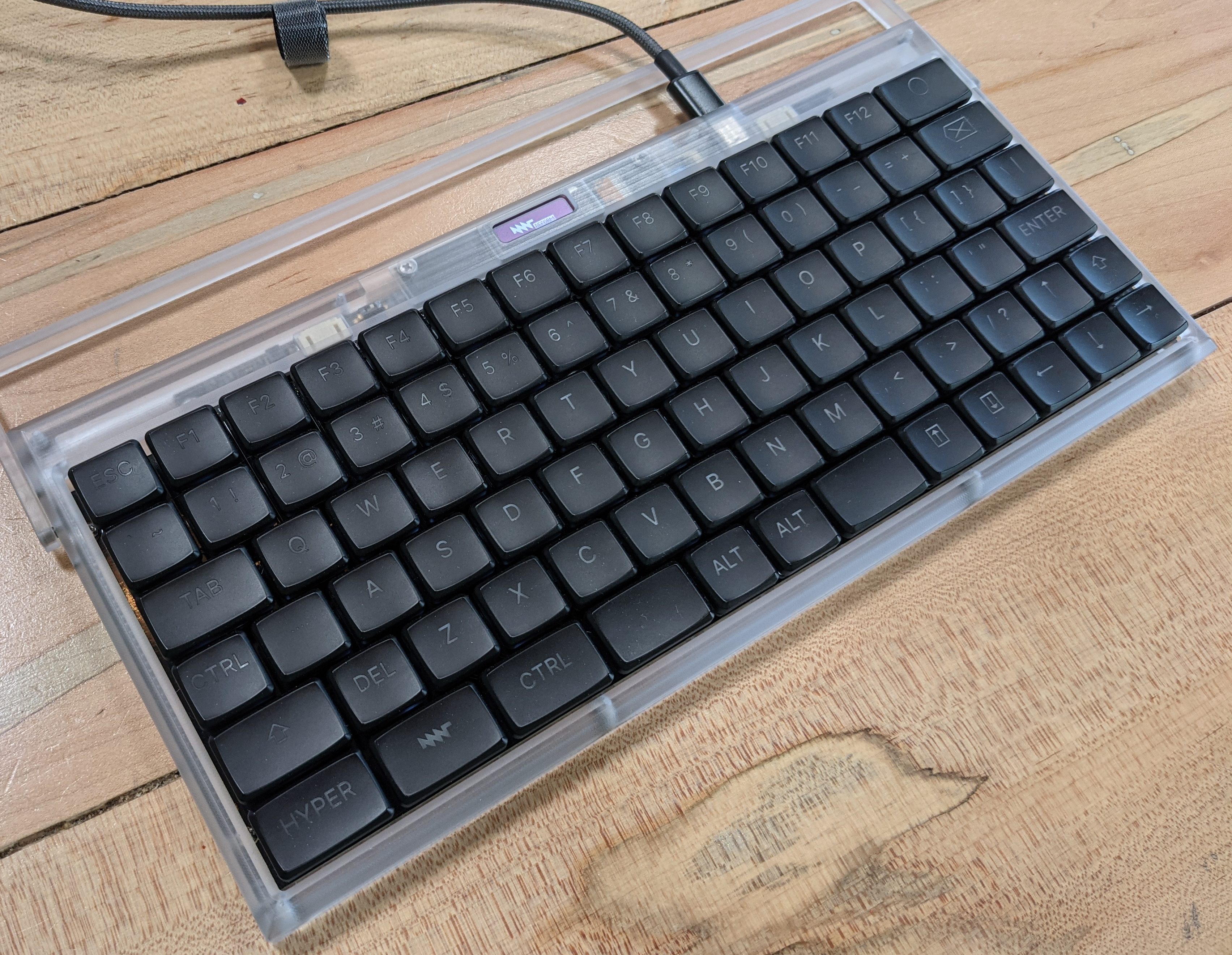
Engaged Hackaday readers may note MNT has another upcoming product which is a close relative to the the Reform laptop. The keyboard we praised earlier has grown legs and stepped away from the trackball to become a standalone product. We had a chance to spend a few minutes with a preproduction unit and can confirm it’s exactly as satisfying as the integrated version. In fact, besides a firmware update, it’s literally the same as the one in the Reform laptop. Same extra deep keycaps, same satisfying but tactile action on the Kailh Choc keyswitches, and same programmable OLED screen. In this case the screen obviously isn’t integrated into the host machine so it’s relegated to providing metadata about the keyboard’s configuration, but MNT indicates you can draw to it with properly formed USB HID packets. We’re looking forward to the first Mavis Beacon integration. If you’re looking for a thin and light mechanical keyboard for on the go clacks and dig the unusual layout, it may be worth a look.
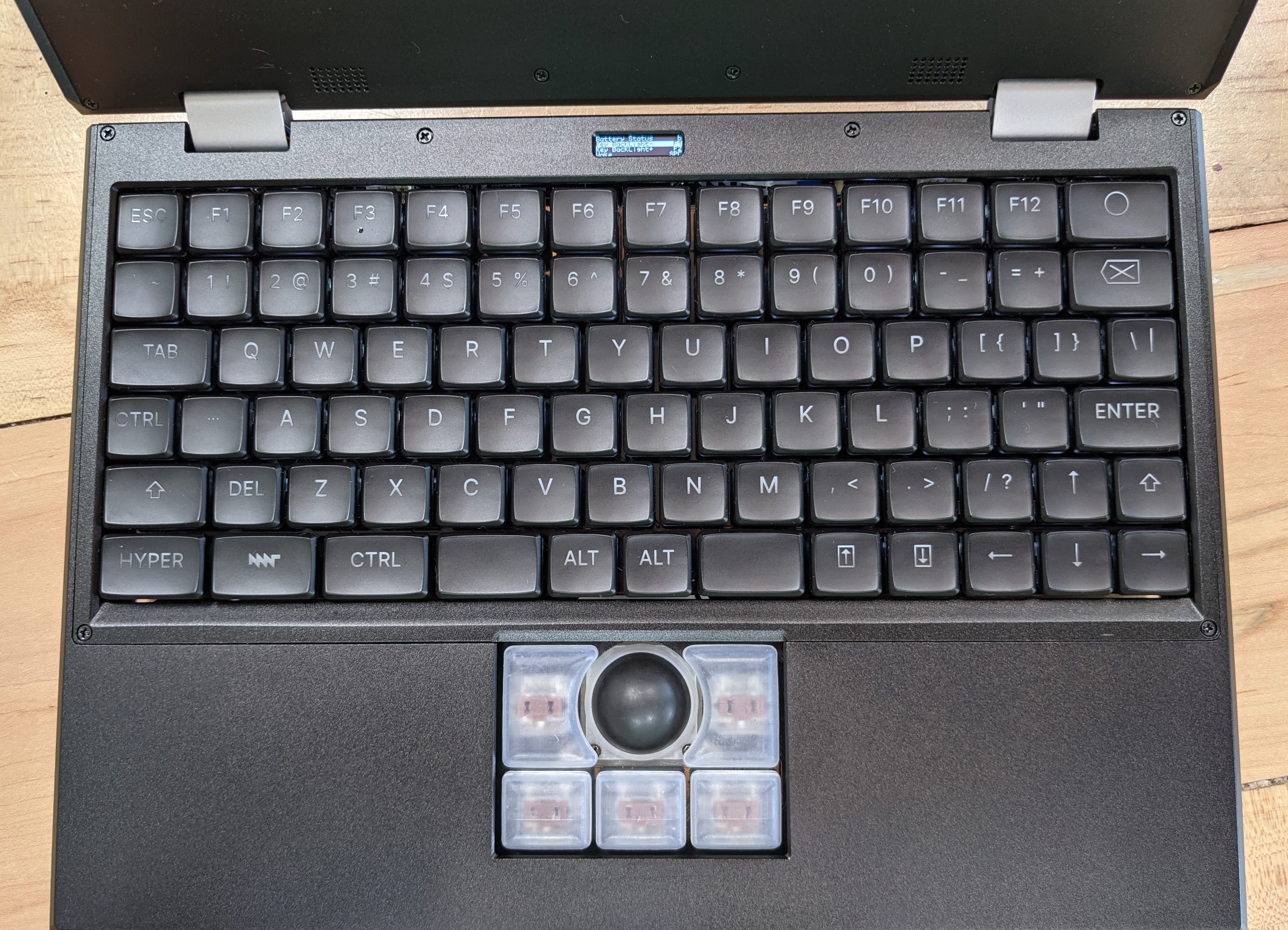
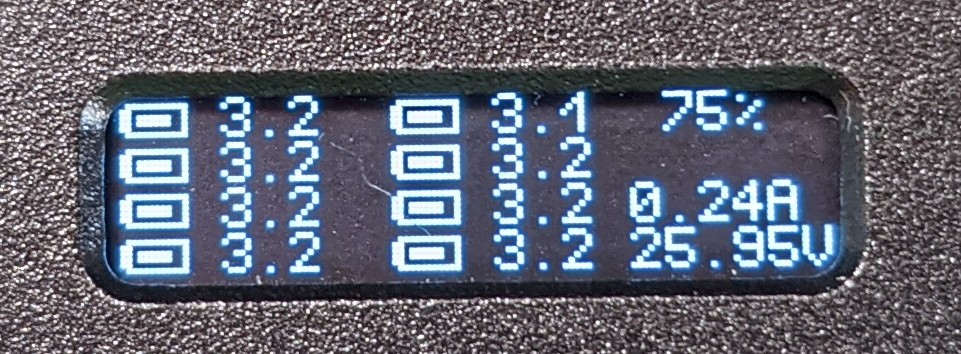
No comments:
Post a Comment